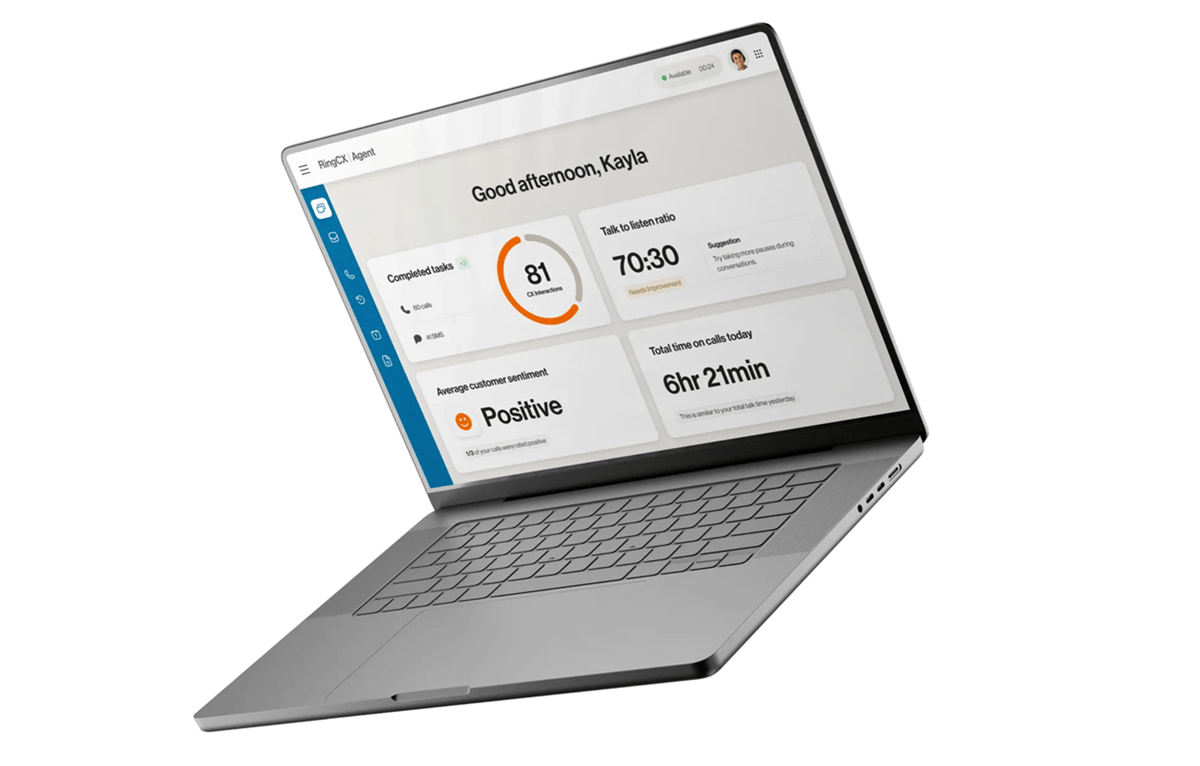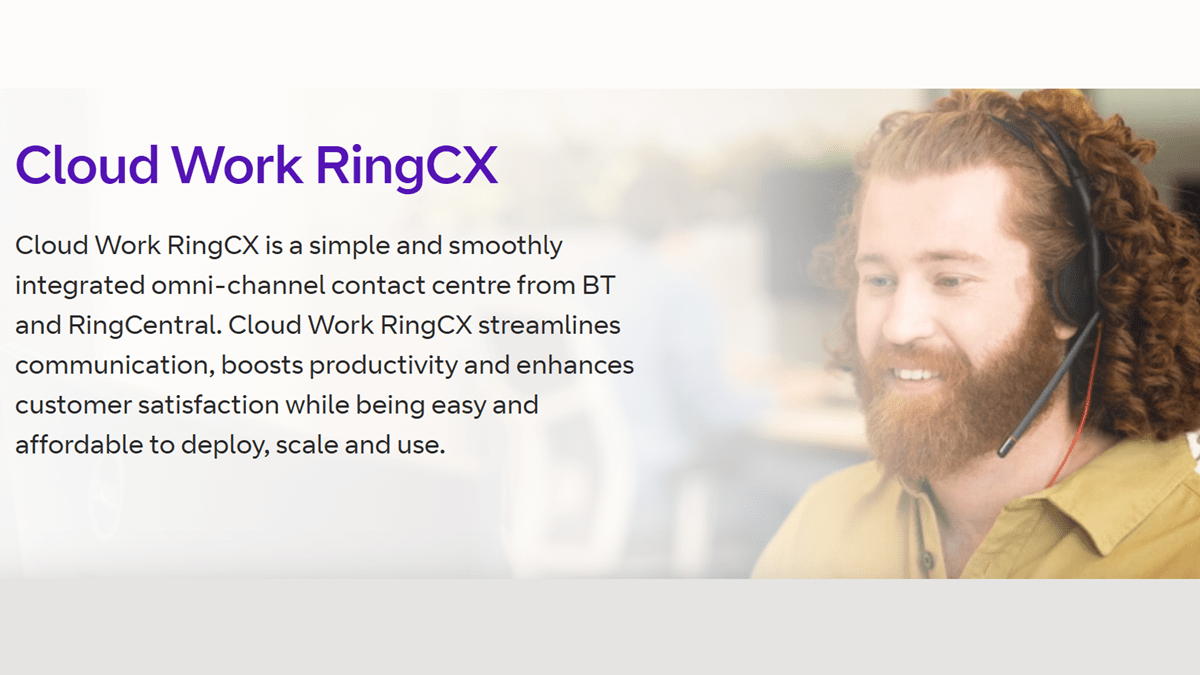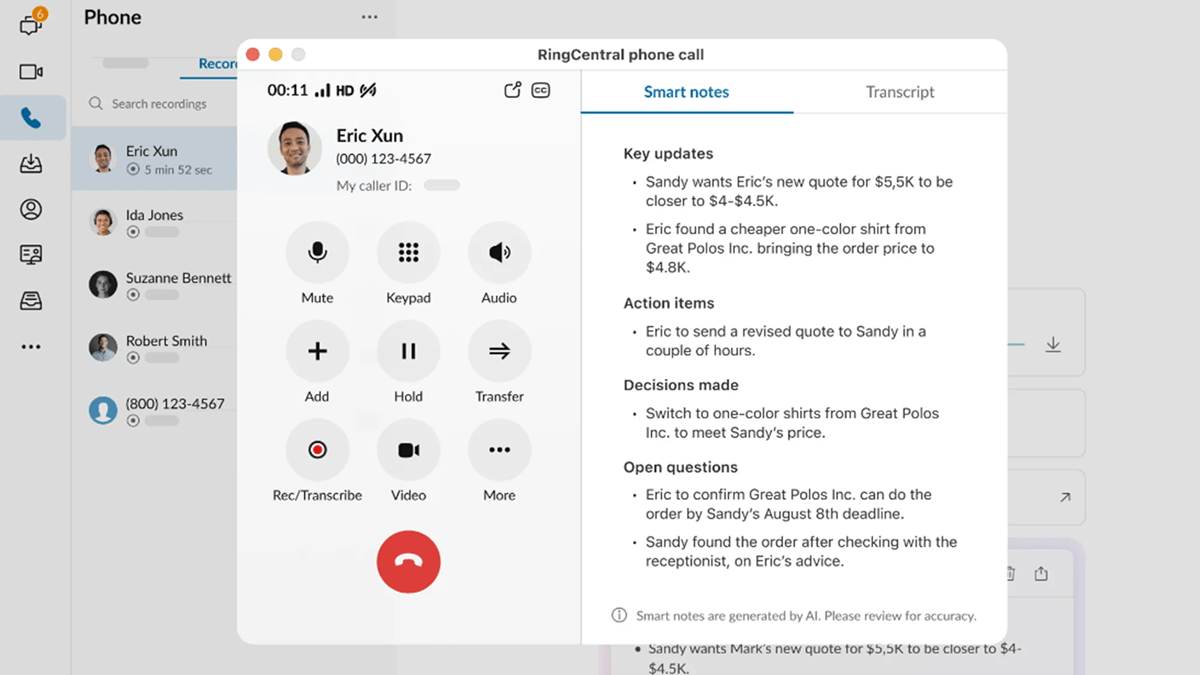RingCentral’s RingSense Updates Deliver Smarter Contact Center Insights, Coaching, and Control
The Brief: RingCentral has released a new round of updates for its RingSense platform in Q2, enhancing how teams manage insights, coaching, and workflows. The updates introduce several new capabilities aimed at reducing noise, simplifying data review, and offering more precise control over output and sharing. Key enhancements include filters for minimum call durations, smarter scorecard management, improved trackers dashboard, and customizable call summaries. Additionally, users can now share call data selectively and benefit from expanded API integrations, new data residency regions, and multilingual support. These features are built to help teams work faster, more accurately, and with more flexibility.
RingCentral Updates RingSense with Smarter Filters, Sharper Coaching, and More Control
Analyst Perspective: The RingSense updates introduced this quarter reinforce a growing emphasis on filtering and precision within contact center platforms. The ability to set minimum call duration thresholds helps reduce the number of short, low-value calls that appear in dashboards, making it easier for reviewers to prioritize relevant conversations.
Scorecard filtering further accelerates the review process by letting users drill down based on score range, evaluator type, or status. This reduces time spent scanning and ensures that coaching resources are allocated efficiently.
Enhancements to the dashboard include a combined view of agent and customer trackers, along with interactive data points that provide quicker access to associated call details.
Call summary customization and selective sharing features give users more flexibility in managing outbound communication. When combined with expanded API access and new data residency support, these RingSense updates offer tools that can better support diverse operational requirements across different regions and teams.
Filter Controls for Cleaner Dashboards
RingSense now allows users to set minimum call durations, ensuring that short, low-value calls are automatically excluded across the platform. This prevents irrelevant data from cluttering dashboards and reports. In addition, teams can customize columns in the Interactions list for a more focused view of conversations. These filtering capabilities aim to reduce manual sorting and simplify how teams prioritize insights. With this update, leaders and analysts can quickly access the most relevant information, boosting operational clarity and improving time-to-insight for team performance evaluations.
Streamlined Scorecards and Coaching Workflows
The updated scorecard tools bring greater efficiency to coaching and evaluation. Users can now filter evaluations by score range, reviewer type, status, or specific scorecards, allowing for more targeted performance reviews. The system also flags vague or unclear scorecard questions and offers suggestions for refinement. This helps reduce inconsistency in scoring and ensures that coaching sessions are based on reliable, well-structured data. These enhancements minimize manual review time and create a more repeatable process for coaching and performance management.
Tracker Dashboards Redesigned for Speed
RingSense introduces a redesigned Trackers Dashboard that unifies agent and customer trackers onto a single view. This simplifies navigation and makes it easier to spot performance trends. The dashboard supports both raw values and percentage views, with clickable data points that lead directly to underlying interactions. Clean charts enhance the user experience, allowing analysts and supervisors to act on insights quickly. The new layout is designed to support faster, more informed decision-making by surfacing critical performance metrics in an accessible format.
Custom Output and Targeted Sharing
New options allow teams to customize call summaries by type, anonymize names, and preview output before distribution. This ensures that only relevant and polished content is published. Follow-up emails are now fully templated, letting users select tone, language, and length to maintain brand consistency. Additionally, when sharing call content externally, users can now select which elements to include—such as summaries, speaker metrics, or key topics—without sending full transcripts. These tools improve compliance, messaging control, and the overall quality of shared data.
The Key Takeaway: RingCentral is Boosting Insight Management Through Configurable Tools
RingCentral’s Q2 RingSense updates demonstrate a clear focus on improving how teams manage, evaluate, and share conversational data. With refined filters, enhanced dashboards, and expanded customization options, the platform offers greater control over the entire insight lifecycle—from data collection to external communication. Teams gain the ability to prioritize relevant interactions, streamline coaching workflows, and tailor outputs to fit internal and external needs. The addition of expanded API access, language support, and regional data residency options also points to a growing readiness for global deployment. These enhancements position RingSense as a more flexible and operationally aligned platform for organizations looking to scale insights across teams.
Strategic Implications for Customer Experience and Operations Teams
These updates introduce changes to how customer experience and operations teams handle data analysis and performance coaching. Through filtering low-value calls and refining scorecard workflows, teams can allocate time and resources more effectively. The redesigned Trackers Dashboard enables quicker identification of service patterns and performance trends, while summary customization helps ensure communications align with compliance and brand standards. For operations leaders, the expanded API and regional data options allow for deeper system integrations and adherence to governance policies. Collectively, these enhancements support a more streamlined, adaptable workflow for teams focused on delivering consistent, data-driven improvements across their customer interactions.

 Source: RingCentral
Source: RingCentral Source: RingCentral
Source: RingCentral Source: RingCentral
Source: RingCentral Source: RingCentral
Source: RingCentral

